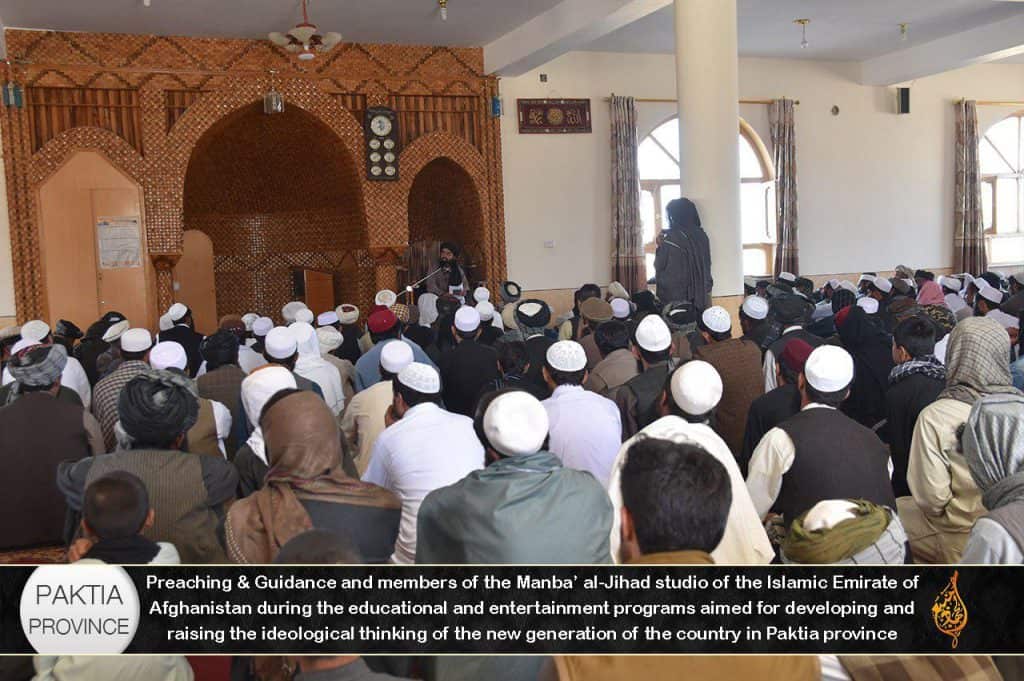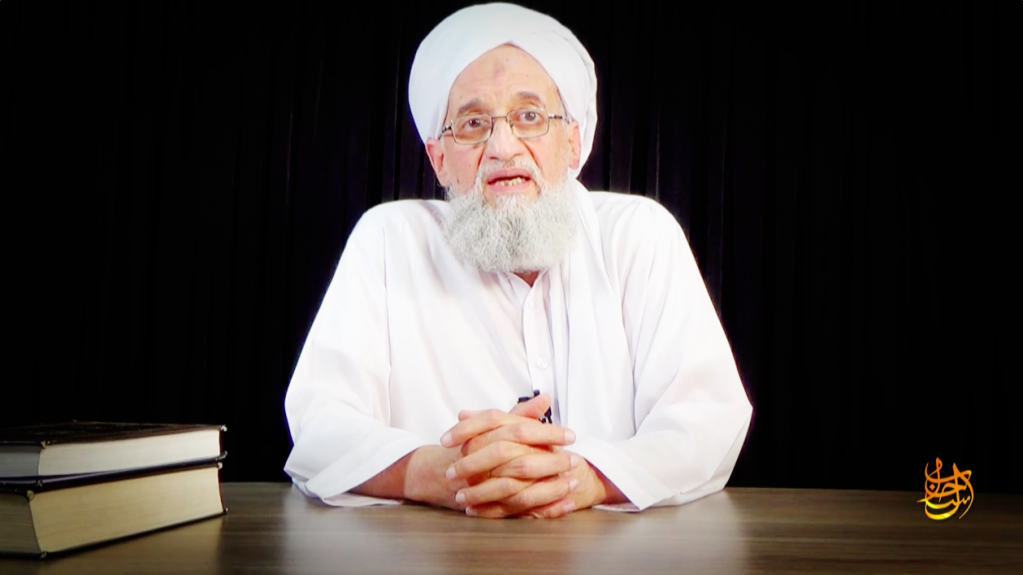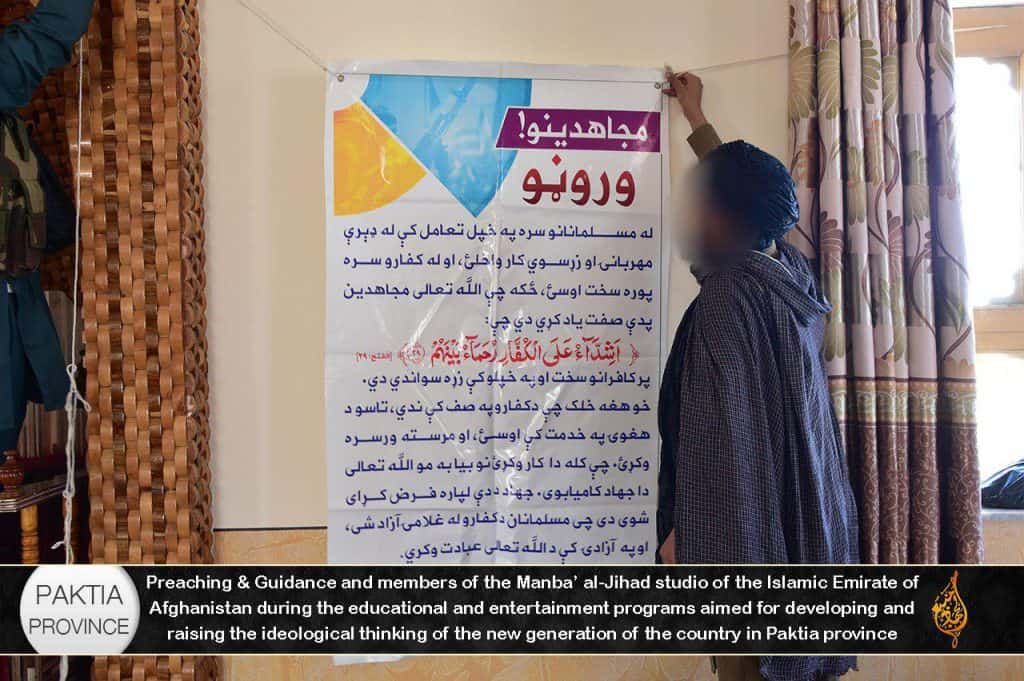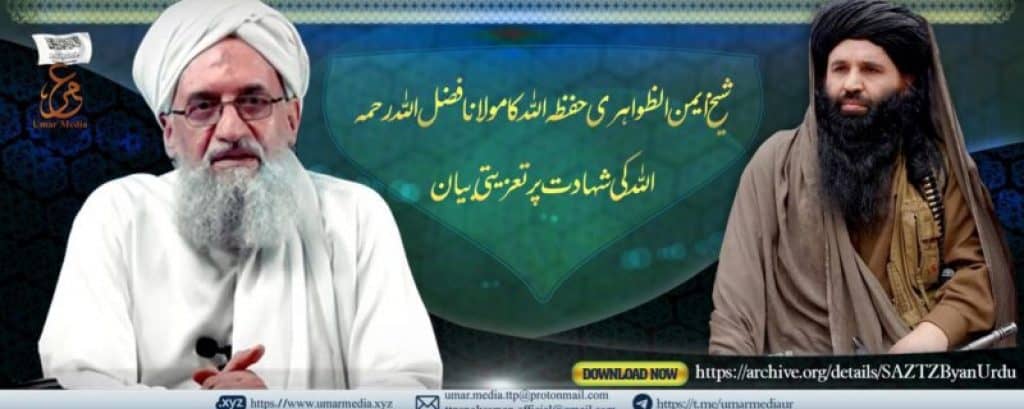
Al Qaeda and the Taliban remain close allies, according to a report by a United Nations Security Council monitoring team. Indeed, Al Qaeda “has grown stronger operating under the Taliban umbrella across Afghanistan and is more active than in recent years.”
While some are eager to portray the Taliban as a purely nationalist organization, the UN notes that the Taliban is the “primary partner for all foreign terrorist groups operating in Afghanistan, with the exception of” the Islamic State’s Khorasan branch, which seeks to undermine the Taliban’s legitimacy.
Al Qaeda “members act as instructors and religious teachers for Taliban personnel and their family members.” And a “number of Al Qaeda activists have reportedly arrived in Afghanistan from Egypt,” though the UN did not identify these Egyptians or say when they arrived.
The UN assesses that the Taliban “cooperate[s] and retain[s] strong links with” Al Qaeda, Al Qaeda in the Indian Subcontinent (AQIS), the Haqqani Network (which is an integral part of the Taliban), Lashkar-e-Tayyiba, the Islamic Movement of Uzbekistan (IMU) and the East Turkistan Islamic Movement (also known as the Turkistan Islamic Party, or TIP), “as well as nearly 20 other regionally and globally focused groups.”
“In return for safe havens and the ability to pursue their own business, foreign fighters continue to operate under the authority of the Taliban in multiple Afghan provinces at undiminished levels,” the UN warns.
Echoing its previous report, the UN says Al Qaeda “continues to see Afghanistan as a safe haven for its leadership, based on its long-standing strong relationship with the Taliban.” Al Qaeda leader Ayman al-Zawahiri, Hamza bin Laden and the Taliban leadership “have repeatedly emphasized the importance of the alliance between” the two groups.

The UN’s analysts provide a brief geographic overview of al Qaeda’s footprint, saying the group “is seeking to strengthen its presence in Badakhshan Province, especially in Shighnan District, which shares a border with Tajikistan.” The Turkistan Islamic Party (TIP), which is clearly part of al Qaeda’s international web, also has a noteworthy presence in Badakhshan.
Elsewhere, Al Qaeda “is eager to expand its presence in Barmal District in Paktika Province,” which is dominated by the Haqqani Network.
Al Qaeda has also been “intensifying its concentration in the Afghan-Pakistan border area in close cooperation with Lashkar-e Tayyiba and the Haqqani Network.”
The UN relays manpower estimates for al Qaeda and various other groups, saying there “are estimated to be a total of 8,000 to 10,000 foreign terrorist fighters in Afghanistan.” This figure includes approximately 2,500 to 4,000 jihadists loyal to the Islamic State, while the rest are “broadly aligned with the Taliban and Al Qaeda.”
The UN says that Afghan officials count “approximately 240” Al Qaeda members, “with the most significant numbers located in Badakhshan, Kunar and Zabul Provinces.” Al Qaeda’s “cadre leaders and mentors are also frequently reported to be active in Helmand and Kandahar.”
As FDD’s Long War Journal has previously assessed, it is exceedingly difficult to get accurate manpower estimates for jihadist organizations. Al Qaeda’s presence in Afghanistan has been repeatedly underestimated in the past. The task is made more difficult by the fact that a number of groups mentioned in the UN report are known to be Al Qaeda’s close allies. In fact, the dividing line between al Qaeda and other groups is often blurry, as jihadists regularly wear multiple hats, belonging to more than one group at a time.
The Haqqanis and the Pakistani Taliban (Tehrik-e-Taliban Pakistan)
In Sept. 2018, the Taliban announced the death of Jalaluddin Haqqani, an influential ideologue and warlord who was one of Osama bin Laden’s first comrades in the region. But Afghan officials allege he actually “died some years ago after a prolonged illness.” In any event, this will have “no tangible impact on the battlefield.” One reason is that Jalaluddin passed control of his operations to his son, Sirajuddin, long ago. Sirajuddin Haqqani has been the Taliban’s overall deputy emir, or number two, since 2015. Like his father, Sirajuddin is an al Qaeda ally.
The Taliban’s Haqqani Network operates a fundraising network that stretches into the Gulf — a longtime source of cash for the jihadists. Although the Taliban has a number of revenue streams, including an illicit drug trade, donations are still significant. The UN says that “charitable foundations in Gulf countries give approximately $60 million annually to the Haqqani Network.” One of Sirajuddin Haqqani’s wives, who is a “national of Saudi Arabia,” serves as a “mediator in this relationship.”

Citing Afghan officials, the UN reports that “between 1,800 and 2,000 fighters belonging to the Haqqani Network lead Taliban operations in the provinces of Khost, Paktia and Paktika.” The Haqqanis’ “influence” can be seen in the fact that they hold “all key shadow government posts in this region, including that of shadow provincial governor and all shadow district governor posts” in those three provinces.
An unnamed Afghan official told the UN that the “Haqqani Network had influenced the nomination of 22 Taliban provincial shadow governors” throughout the country. If true, then the Haqqani Network holds great sway over the Taliban’s shadow governance structure, which is intended to rival and ultimately supplant the US-backed Afghan government.
The Haqqani Network’s ranks are “bolstered by fighters of the Tehrik-e-Taliban Pakistan who operate within Haqqani and Taliban ranks.” Tehrik-e-Taliban Pakistan, more commonly known as the Pakistani Taliban, is also allied with al Qaeda.
The Pakistani Taliban’s men “are divided between those involved in Afghan operations and a faction loyal to the group’s former leader, Baitullah Mehsud, who are mainly focused on anti-Pakistan activities.” Meshud was killed in a 2009 drone strike.
Currently, the Pakistani Taliban is “estimated” to have “more than 3,500” fighters in Kunar, Paktiya and Paktika. The latter two provinces are the aforementioned Haqqani strongholds.

The group’s emir, Mullah Fazlullah, was killed alongside “four of his subcommanders” in a June 2018 drone strike in the Marawarah District of Kunar. Mufti Noor Wali Mehsud, a “religious scholar” and “seasoned fighter,” was named as Fazlullah’s successor. The UN reports that Mehsud, who hails from South Waziristan, formerly led the Pakistani Taliban’s “operations” in Karachi, Pakistan and “is known mainly for his rigorous opposition to polio vaccination campaigns.” The “appointment of a member of the Mehsud tribe was likely intended to produce greater unity within the group.”
A Pakistani Taliban splinter group, Jamaat-ul-Ahrar, also has a presence in Afghanistan’s Nangarhar province. Afghan officials told the UN that Jamaat-ul-Ahrar “has split into two factions,” with some of its fighters joining a “new organization,” Jamaat Hizbi Ahrar, which is led by Mawlawi Umar Khorasani. The “other faction” continues to operate as Jamaat-ul-Ahrar.
Other jihadist groups allied with the Taliban in Afghanistan
The Pakistani Taliban isn’t the only foreign terrorist organization based in Kunar province. The UN says Kunar “remains a focal area for foreign terrorist fighters,” with Lashkar-e-Tayyiba (LeT) being one of the “more prominent groups operating there.”
The LeT acts “as a key facilitator in recruitment and financial support activities,” with Afghan officials stating that “approximately 500” LeT members are “active in Kunar and Nangarhar Provinces.”
The LeT apparently tried to “establish some kind of truce” between the Taliban and the Islamic State’s Khorasan province, but recently “distanced itself from” Baghdadi’s loyalists, playing a “more neutral role.”
Several other small Central Asian jihadist groups continue to fight “under the direct operational and financial control of the Taliban.” The UN lists these groups as the Islamic Movement of Uzbekistan (IMU), Khatiba Imam al-Bukhari (KIB), and the Islamic Jihad Group (IJG). The latter two are IMU splinter groups.
The IMU split apart as a result of the Islamic State’s rise, with the group’s leadership deciding to throw in with Abu Bakr al-Baghdadi. However, the Taliban struck back, punishing the IMU for defecting to the so-called caliphate’s cause. The UN considers the remaining IMU organization, which is loyal to the Taliban, to be small. The IMU, based in the Faryab and Jowzjan, “does not exceed 100” people, “half of whom are family members.”
The KIB is “affiliated with Al Qaeda and conducts operations for the Taliban.” It “has a cell of some 40 fighters operating in Afghanistan,” according to the UN.
The IJG (also known as the Islamic Jihad Union) is based in the “northern Afghan provinces of Takhar and Badakhshan” and consists “of about 50 fighters.” The UN claim it “is also controlled by the Taliban.”
US State Department seeks counterterrorism assurances
Zalmay Khalilzad is leading the American effort to secure a peace deal with the Taliban. Khalilzad told the press earlier this year that he was already satisfied with the Taliban’s counterterrorism assurances, despite the fact that the group hasn’t disowned al Qaeda or any of the other jihadist organizations in Afghanistan mentioned above.
The UN’s analysts write that the Taliban “continues to enjoy support and endorsement” from Al Qaeda in Afghanistan. It “remains to be seen whether they will be willing to give this up in favor of progressing peace talks.”
Thus far, Al Qaeda has not even hinted at a betrayal. As the UN notes, al Qaeda continues to release statements emphasizing that the Taliban’s Islamic Emirate of Afghanistan is “an example for all Muslims to follow.” Zawahiri released one such video in August 2018. In it, Zawahiri “stated that Al Qaeda considered the Islamic Emirate of Afghanistan to be the centerpiece of a resurrected caliphate and urged all Muslims to support the Taliban’s war against the Crusaders campaign in Afghanistan and elsewhere.” [For more on Zawahiri’s message, see FDD’s Long War Journal report: Al Qaeda leader argues Taliban’s ‘blessed emirate’ a core part of new caliphate]
The Taliban and Al Qaeda allied groups discussed in the UN’s report operate throughout the region, and globally. They are not currently confined to Afghanistan. FDD’s Long War Journal assesses that it is highly unlikely that these groups will curtail their activities when and if Western forces depart Afghanistan.
AQIS has plotted terrorist attacks in Pakistan, while running camps inside Afghanistan and maintaining a footprint in neighboring countries. Lashkar-e-Tayyiba opposes Indian forces in Kashmir and has carried out large-scale terrorist attacks inside India. The Pakistani Taliban continues to attack government forces and civilians south of the border. (The Pakistani Taliban is opposed to the Pakistani state, even though it works with the Haqqani Network, which is allied with parts of the government.) In addition to their presence in Afghanistan, the KIB and TIP also fight in Syria.
The UN says that the small Central Asian jihadists groups allied with the Taliban “may harbor” Islamic State “sympathies and ambitions to launch attacks in Central Asia.” They are not currently attacking outside of Afghanistan’s borders, as the Taliban is focused on reclaiming its emirate. But that could change in the future. And if the Taliban were to truly inhibit them from operating throughout the region in the future, then it is possible that some will defect to the Islamic State’s cause. US officials have entertained the possibility that other Taliban fighters will defect in the event of a peace deal as well.
However, the Taliban hasn’t renounced its decades-long partnerships with these groups, or al Qaeda.
For more on the UN’s other recent reports on Al Qaeda and the Taliban, see:
UN: Al Qaeda continues to view Afghanistan as a ‘safe haven’
Al Qaeda’s alliance with the Taliban ‘remains firm,’ UN says
Editor’s Note: The spelling of some words was changed for consistency.








4 Comments
Deluded men wearing outdated clothing. How do they draw followers??? The ideology offers nothing for moral men. The isolation is antisocial. I think it has to do with piracy under the umbrella of religion. Because the UN and many nations can’t or won’t recognize the irrational nature of calling all religions great even when their “truths” contradict we will as a world continue to suffer.
lets hope and pray that they all just kill each other!
I trust, it is education & prosperity, can only control these group. If you observe, they influence only illiterate & poor people of their community, none of them from UK get influenced. Have you heared anyone from Netherland has done any favour for these group? While Netherland is full of this community.
Entire world should contribute in their education & prosperity,.
The Taliban saying the NATO invasion of Afghanistan was wrong/illegitimate is ridiculous. NATO invaded Afghanistan because of OBL doing 9/11. Had OBL not done 9/11, or had the Taliban handed over OBL to the US after OBL did 9/11, NATO would not have invaded Afghanistan, and the IEA would still exist.
The Taliban use the ridiculous excuse that instead of NATO invading Afghanistan, the US should have heeded the Taliban’s suggestion that OBL be tried in a neutral, 3rd Muslim country over the 9/11 attacks. However, OBL, Ayman al Zawahiri and the AQ leadership had a very close relationship with Mullah Omar and the Taliban leadership.
So either Mullah Omar and Co knew that OBL was planning on doing 9/11 and they maybe colluded with OBL on 9/11, or OBL told them afterwards that he did 9/11 after the Taliban would have asked him if he had anything to do with 9/11. OBL wouldn’t have lied to them that he didn’t do 9/11, only to later confess to and boast about doing 9/11 on audio and video tapes.
Also, the Taliban have NEVER denied that OBL did 9/11.